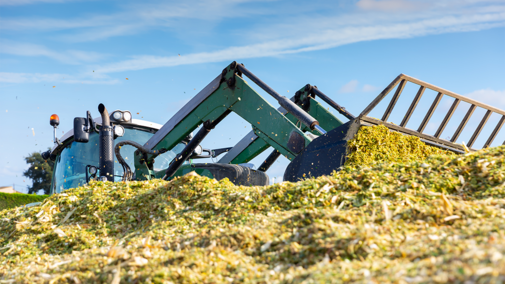Winter Annual Forages
Are you thinking about seeding a winter annual cereal grain to have some forage next spring? The possible choices are wheat, rye or triticale, but which of these small grains should you seed this fall? Let’s look at some of their characteristics to help you select.
Cereal rye is your best choice for the earliest grazing possible. Because it’s early, it also may be the best match for double cropping. Rye can provide some fall forage, if planted early. Rye also may be the most reliable when planted under stressful conditions. But it has some drawbacks. It turns stemmy and matures much earlier than wheat or triticale, losing feed value and palatability earlier in the spring. Plus, wheat grain producers don’t want it contaminating fields next year.
Triticale holds on to its feed value best into late spring. This makes it well-suited for hay and silage, or for stretching grazing well into June if you don’t mind starting two or three weeks later compared to rye. But triticale tends to be a bit more susceptible to winter injury.
Winter wheat has been the small grain of choice for winter and spring grazing in the southern Plains, where higher winter temperatures allow growth to continue, although slowly. In Nebraska, wheat is the clear choice if you want the double use as early pasture and then for grain. There are specific varieties of winter wheat such as Willow Creek that have been shown to provide improved spring growth and grazing potential with top quality before stems develop.
So, there it is. Rye for early pasture, triticale for hay, silage or later grazing, and wheat for grazing plus grain. You may have other factors affecting your choice, but in general, these guidelines work well.
Pricing Corn Silage
Silage is a cornerstone feed for livestock across Nebraska. Knowing its value is critical for making sound management decisions whether it be accurate budgeting for your own operation or selling to a buyer.
UNL research shows that corn silage standing in the field should be valued per ton at 7.65 x the price per bushel of corn at 60% to 65% moisture. This is consistent regardless of corn price. If we put our corn price at $3.75 per bushel. Using the multiplier, that puts silage in the field at about $28.69 per ton. This accounts for harvest grain price, not having to combine or haul grain to market, increased grain price due to storage and the cost of silage storage.
When we start looking at prices in the silo, harvest, hauling and packing add to the base cost. The 2024 Nebraska Farm Custom Rates publication showed an average custom rate of $15.13 per ton. If we add that to our $28.69 field price, we come out to $43.82 per ton in the pile. When $3 per ton is added for storage expense, the price per ton is $46.82.
If we want to take it one step further and value silage in the bunk, we need to consider shrink. Once silage ferments, some dry matter is lost, which typically ranges from 10-20%. If we consider 10% dry matter shrink, the final value of silage delivered to the bunk (without any trucking costs) is $51.50.
Silage pricing will always shift with markets and costs, but by running the numbers, you can get a clearer picture of the feed value of this important feedstuff for your operation.
Verbal Pasture Lease Agreements
There are a couple of leasing options for producers and landowners. Verbal leases are a common form of lease agreement. However, if someone is considering terminating a verbal lease, there are some dates and rules to remember for those with crops vs. pasture verbal lease agreements. The Nebraska Supreme Court has ruled that the lease year begins March 1 for year-to-year verbal leases. Notice to a tenant to vacate under a verbal or handshake year-to-year lease must be given six months before the end of the lease or no later than Sept. 1 for crop production. It is recommended that Registered Mail™ terminate the farmland lease. This means the person receiving the letter signs for it, providing evidence that the termination notice was received.
Handshake or verbal leases are different for pastures. The typical pasture lease is for the five-month grazing season. The lease is only in effect for that time, so the lease is terminated at the end of the grazing season. However, different lease length arrangements can be made in a written lease.
In all instances, written leases would be preferred over oral or “handshake” leases. Sample leases are available in the Ag Lease 101 library and can help both parties start thinking about the appropriate lease conditions for their situation.

